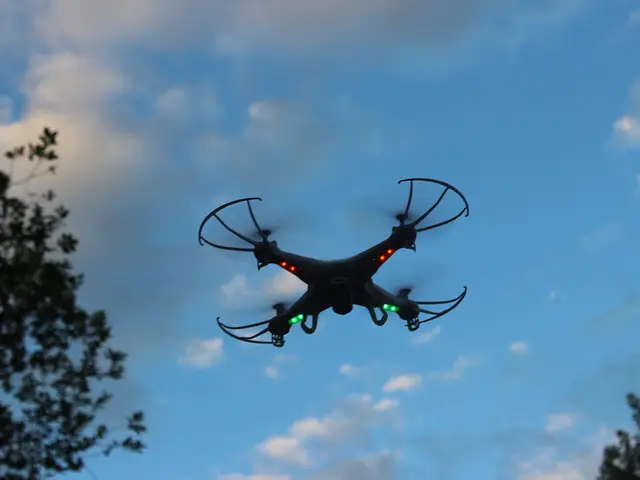Increasing Space Congestion Calls for Advanced AI Solutions by Space Force: Opinions of Specialists
In the current realm, it's not just think tanks churning out reports – they're actually building tools that can revolutionize operations. Case in point, the RAND Corporation developing AI solutions for the Space Force to navigate the chaotic space environment.
According to Li Ang Zhang, a team leader at RAND, these AI tools can act as an instant lifeline, helping analysts tackle the colossal amount of satellite data and make sense of it all. The AI technology is essential for supporting human analysts in managing the data influx, particularly in low-earth orbit (LEO).
Reb Butler, a senior advisor to the Space Force's Chief Technology and Innovation Officer, emphasizes that the AI utilized by the Space Force is different from the generative AI commonly spotlighted in recent years. Nevertheless, it plays a crucial role in filtering the vast amount of data produced by lightning-fast satellite launches, which have surged in the last few years.
The Space Force is striving to reduce the cognitive burden on its analysts by automating various tasks. However, as Butler points out, there's still a significant amount of work to be done. To tackle this challenge, the RAND team took a deep dive into a single use-case for AI: conjunction assessment.
Conjunction assessment (CA) is the process of determining the possible collisions between objects in orbit. As the number of satellites has skyrocketed in recent years, it's becoming increasingly difficult to keep up with CA. The Space Force is monitoring nearly 45,000 objects in orbit, and with the expanding and dynamic orbital environment, the calculations required to predict potential collisions quickly outpace the available computational power.
Legacy technology, some of which is more than a decade old, is a major bottleneck in the Space Force's space domain awareness (SDA) capabilities. Until a modernization effort called the Advanced Tracking and Launch Analysis System (ATLAS) is complete, the AI tools developed by the RAND team can serve as a helpful interim solution. These tools could help legacy computers keep up with the burgeoning data volume and complicated calculations, allowing them to provide a "first cut" analysis for analysts to focus on the most pressing tasks.
While the RAND team hasn't been able to test their AI tools on the classified legacy computers, they've been designed and tested on old machines, and Zhang is confident they'll work on the legacy technology being used for SDA. To the Space Force's credit, they have the infrastructure to integrate new algorithms and technologies, but it remains to be seen when these AI tools will be integrated into their processes.
The shift of the traffic management role for conjunction assessment from the Space Force to the Department of Commerce is further complicating the situation. While the Space Force wants to focus on newer capabilities for a more dynamic space domain, AI tools for conjunction assessment could provide an immediate advantage in managing the growing volume and complexity of tasks in this critical area.
The space domain is becoming increasingly crowded, with new megaconstellations like Starlink and Amazon's Kuiper launching regularly. The risk of not using AI/ML is an outdated system that is increasingly incapable of producing accurate and timely conjunction warnings, potentially leading to catastrophic collisions.
Ultimately, the Space Force must incorporate new technologies like AI to remain competitive in the ever-evolving space environment, even if there are challenges integrating these solutions into their existing systems and bureaucracy. The stakes are high as the number of objects in space continues to surge, and timely, accurate conjunction warnings are vital to ensuring the safety and security of our satellites and the larger space ecosystem.
- The RAND Corporation's AI solutions, designed for the Space Force, are vital for navigating the chaotic space environment and managing the colossal amount of satellite data, particularly in low-earth orbit.
- The Space Force is utilizing AI to automate tasks, filter data produced by satellite launches, and aid in conjunction assessment, a process of determining potential collisions between objects in orbit.
- The AI tools developed by RAND could serve as interim solutions for the Space Force's legacy technology, helping legacy computers keep up with the burgeoning data volume and complicated calculations.
- The Space Force is faced with the challenge of integrating AI tools into their existing systems and bureaucracy, as the number of objects in space continues to surge, making timely and accurate conjunction warnings crucial for the safety and security of satellites and the overall space ecosystem.








